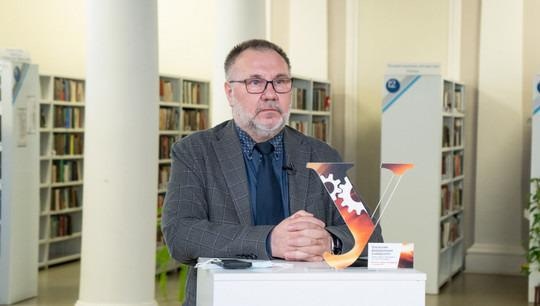Researchers from the Ural Federal University and the Institute of Metallurgy of the Ural Branch of RAS together have devised and successfully tested the method of joint non-waste processing of electric furnace and ladle slag.
 According to Oleg Sheshukov, the technology allows the complete utilization of two types of slags. Image Credit: UrFU Photo Club.
According to Oleg Sheshukov, the technology allows the complete utilization of two types of slags. Image Credit: UrFU Photo Club.
The technology will contribute to yield valuable materials, Portland cement clinker and pig iron, as well as overcome environmental pollution issues. The study was published in the journal Proceedings of Higher Education Institutions. Ferrous Metallurgy.
The development and testing process involved various stages. Ladle slag is commonly considered as a dust fraction and is not suitable for recycling processes. Hence, the researchers initially attempted to stabilize the ladle slag in a solid-state. To achieve this, an affordable waste material known as borate glass, which also required processing, was added.
Extracting clinker from ladle slag is a complex technological process compared to obtaining pig iron from electric furnace slag. Considering this factor, the scientists initially evaluated the conditions such as the temperature levels needed to produce clinker and the chemical composition of the mixture to be processed (charge).
A charge with admixtures of the silica- and alumina-containing minerals such as belite, alite, and brownmillerite was produced through crushing and mixing. Under laboratory conditions, the briquette charge was heated to complete melting in a furnace at 1500 °C to 1600 °C. Then, it was held and slowly let to cool.
The series of experiments revealed that the clinker quality relating to the state standard is obtained from five compositions of slag at 0-minute curing at a temperature ranging between 1540 and 1560 °C.
In the following stage, by maintaining the charge composite, the researchers chose samples of waste electric furnace production with a similar structure at Seversky Tube Plant. Such samples exhibit a greater iron content.
At the end of the process, following many melts with coke as a carbon-reducing agent of iron along with Portland cement clinker, pig iron was yielded, fulfilling the conditions of state standards. Meanwhile, every starting material was processed into marketable products.
Our technology allows the complete utilization of selected types of slag and thus solves the problem of anthropogenic load on the environment. It is especially important that we managed to achieve complete recycling of out-of-furnace slags. Since there is very little iron in them, such slags are usually sent to landfills, constantly increasing the damage to the environment.
Oleg Sheshukov, Director, Institute of New Materials and Technologies, Ural Federal University
The joint non-waste production technology to obtain Portland cement clinker and pig iron was successfully tested at the pilot plant of Klyuchevskoy Ferroalloy Plant. The test melts helped the researchers conclude that it is essential to employ a low-cost rotary inclined furnace rather than the arc one to prevent overheating and control temperatures and economy. The arc furnace is a cylindrical tank slightly inclined horizontally and slowly rotating along its axis.
The charge filled into the rotary tilting furnace via mixing, reduction, and melting generates pig iron and the slag residue, clinker. Mixing the clinker with gypsum dehydrate and firing this mixture in the kiln leads to Portland cement, a commonly used cement variant.
The work has been highly praised by representatives of science and industry. One of the authors of the technology, Daniil Lobanov from the Institute of Metallurgy of the Urals Branch of the Russian Academy of Sciences, defended his thesis for the degree of Candidate of Technical Sciences. Industrial enterprises of the Urals region and Kazakhstan have shown interest in the technology
Oleg Sheshukov, Director, Institute of New Materials and Technologies, Ural Federal University
Sheshukov is also a Chief Researcher at the Institute of Metallurgy, Ural Branch of RAS, and Head of the Technology Developer Group.
Journal Reference:
Sheshukov, O. Y., et al. (2021) Waste-free processing of ladle and electric furnace slag. Proceedings of Higher Education Institutions. Ferrous Metallurgy. doi.org/10.17073/0368-0797-2021-3-192-199.